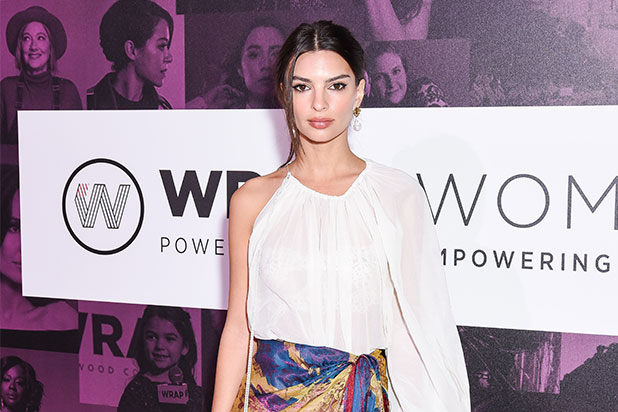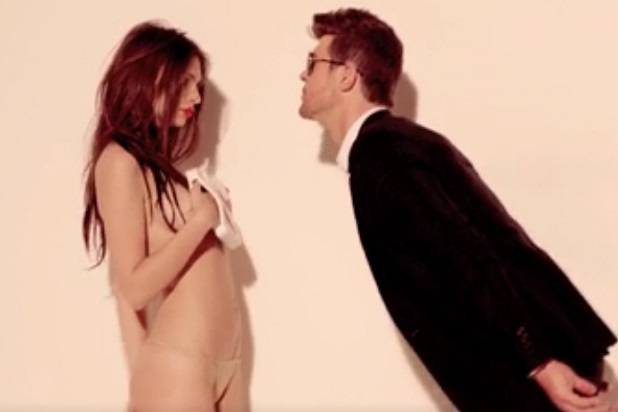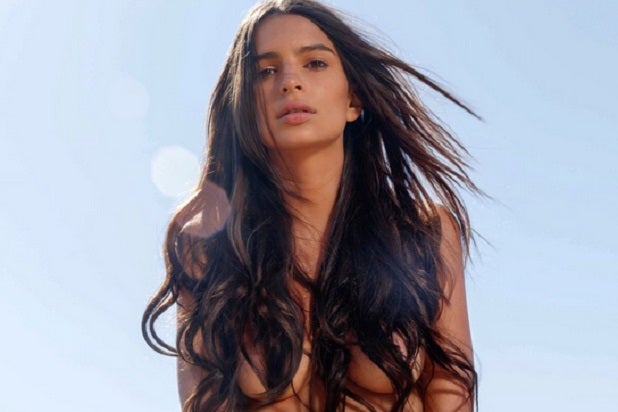https://twitter.com/i/status/859814293629304834
https://twitter.com/i/status/841288194800910336
https://twitter.com/i/status/806917826346745856
...|...
emrata's choice
MEMO FROM FRANCE
From Bikinis to Burkinis, Regulating What Women Wear

PARIS — The policeman in the photo is nattily attired and appears to have a slight smirk as he writes out a ticket for the woman standing before him awkwardly in her offending swimwear; perhaps he enjoys making her feel uncomfortable.
No, she is not wearing a burkini.
The photo dates from 1957. The woman is wearing a bikini on the beach at Rimini on Italy’s Adriatic coast. At the time, Italy prohibited the revealing bathing suit; it was too immodest to be worn in public.
In the midst of France’s fight over banning the burkini, the bikini is celebrating its 70th anniversary, and photographs chronicling its debut and early history in the 1940s, ’50s and ’60s are on display in one of Paris’s chic galleries, prompting parallels to the uproar over the burkini today.
What is it about women’s swimwear and more generally women’s attire that over and over in history has attracted controversy and impelled societies to legislate or regulate women’s choices?
ADVERTISEMENT
Historians, sociologists and anthropologists have argued about it for decades, but the seemingly simplistic statement that women’s bodies are a battleground has some truth to it. Formally or informally, men (primarily) have been making rules about women’s attire for a very long time.
“Can’t we decide what we want to wear in 2016?” wondered Sarah Fekih, 23, from Lyon, France, in a comment she wrote to The New York Times. “If one wishes to dress skimpily or to be almost nude or to be covered from head to toe, isn’t that a personal choice that can not be dictated by law?”
Of course, the burkini debate is not only about feminism. It is foremost a debate about the visibility and presence of Islam in France, and it comes in the context of the most recent act of terror to traumatize the country, this one in Nice, on the Mediterranean coast.
On July 14, a man drove a cargo truck into crowds of people there, killing 86 and wounding 300. The Islamic State later called him one of its “soldiers.”
Less than a month later, the first of at least 30 bans on “inappropriate” clothing on beaches — meant to target Muslim attire — was enacted in Cannes, about 20 miles from Nice.
ADVERTISEMENT
Although France’s highest administrative court, the Council of State, struck down one town’s burkini ban on Friday — and clearly would do the same for other towns if lawsuits were brought — the fight is far from over.

The Parliament could enact a ban, and some of France’s 2017 presidential candidates on the right and far right have pledged to enact measures that run from banning the Muslim veil in universities and businesses to banning almost all religious attire in public.
As the debate continues, much that is important will be said about France and racism and Islam, but it is worth pondering that it is women’s clothes that are at issue.
Throughout history, a combination of legislation, local regulation and social pressure has influenced the way women have dressed — corsets and décolleté, hoop skirts and bustles, the controversial advent of pants. France is now a society demanding that women undress, but in many ways this debate is part of the same narrative.
In the case of both the bikini and the burkini, “people in positions of power say, ‘We’re putting these rules in place for the woman’s good,’” said Deirdre Clemente, a history professor at the University of Nevada who has studied dress codes for women. “The implication is that women are unable to regulate their appearance themselves.”
As recently as the 1980s, a number of large American corporations had extensive dress codes for women. “There would be four pages on what a woman could wear to work, and four sentences for men,” Professor Clemente said.
ADVERTISEMENT
When it came to the bikini, not only was it forbidden in some countries, with women forced to pay fines and leave many beaches if they wore one. It was also seen as subversive and a sign of moral weakness.
Italy, Spain and some beaches on the Atlantic coast of France prohibited wearing the swimsuit in the first few years after it went on the market, said Ghislaine Rayer, a co-author of “Bikini: La Légende,” a history of the mini-swimsuit.
That prohibition resonates in today’s burkini debate, said Hanane Karimi, a graduate student of sociology at the University of Strasbourg. She is the leader of a feminist Muslim collective that wants mosques in France to make more space for women at prayers and to be more respectful of their involvement in religious affairs.
“In some countries that had strong religiosity, like Italy, controlling women’s bodies was a part of the country’s religious morality; today in France there is a civil religion of secularity,” she said. “And it has the exact same logic in respect to the control of women’s bodies: Those women who adhere to that secular morality are undressed on the beaches; nothing is hidden.”
Today the French seem to believe as strongly that such undress is mandatory as Italy, under the Vatican’s influence, felt it was necessary to hide women’s bodies, she added.
It was not always that way. When the designer of the first bikini, Louis Réard, coined the name (a play on the tiny atoll of Bikini, where the United States had just tested the atomic bomb) and showed his new swimsuit at the Molitor Pool in Paris on July 5, 1946, he could not find models willing to wear it.
ADVERTISEMENT
So he hired dancer-strippers from the Paris Casino. “It was avant-garde; it was ahead of its time,” said Ms. Rayer, the co-author of the book on the bikini’s history. “In that epoch, we were still puritan.”
Although the bikini quickly became popular in movies, it took more than 15 years, and longer in many places, to enter the fashion mainstream. France embraced it ahead of several other countries and eventually even allowed women to sunbathe or swim topless.
Joan Wallach Scott, a social scientist at the Institute for Advanced Study in Princeton, sees France’s approbation of revealing swimwear, as well as the current burkini bans, as products of ideas going back to the French Revolution of 1789.
“What you have in French republicanism is a conflict between a commitment to equality and the notion that sexual difference is a natural difference which explains why there can’t be equality between women and men,” she said.
The French believe it is necessary to show the difference between men and women physically even while proclaiming their equality, Ms. Scott said.
The painter Eugène Delacroix depicted “Liberty” as a bare-breasted woman leading the righteous French. Sculptures and reliefs of a bare-breasted or semi-bare-breasted Marianne, a French symbol of the revolution and liberty, can still be found on government documents, buildings and postal stamps. The very depiction of women reflects how the sexes differ.
“Then on the other side you have Muslim society saying that sex and sexual difference is a problem, and women, whether submitting or not, are covered. So in a sense they are exposing the contradiction in French society, and that’s intolerable,” Ms. Scott said. “It becomes a commentary on the French need to have women uncovered.”
ADVERTISEMENT
Indeed, the deputy mayor of Nice, Christian Estrosi, who is a political power broker on the Côte d’Azur, has repeatedly referred to the covering of women on the beach — whether in a burkini or a large T-shirt, pants and hijab — as a “provocation,” suggesting a challenge to the French order.
Such language mystifies one of the burkini’s designers, who sells her pieces in France. Vanessa Lourenço, the designer, said she had started creating them to give Muslim women a chance to participate in the same activities as the rest of the community.
She loves to swim herself, she said, so seeing religious Muslims or other people not go swimming “struck me as unacceptable.”
Ms. Lourenço, whose internet business sells swimwear in 120 countries, is not Muslim, and people often ask her why she designs for Muslim women.
“My answer is simple: At the end of the day women are women, whether Muslim or not, and we all want to be comfortable, look beautiful and feel feminine,” she said.
“Most of our clients message us saying it is the first time that they were confident enough to be at a public beach enjoying themselves with their family.”
A version of this article appears in print on , on Page A5 of the New York edition with the headline: Penalizing Women for Covering Too Little, and Then Too Much. Order Reprints | Today’s Paper | Subscribe
...|...
When model/actress Emily Ratajkowski ditches her clothes, things heat up -- including it seems, people's tempers. Read on for a history of Ratajkowski's tendency to spark anger with her nudity.
The Bare Facts: Ratajkowski busted onto the scene big-time in 2013, loaning her breasts to the video for the Robin Thicke tune "Blurred Lines." And unlike the song itself, nobody doubted their authenticity.
So Who's Complaining? A lot of people, actually. Like the song, the video was branded by some as sexist.
The Bare Facts: In a show of naked sisterhood with Kim Kardashian, Ratajkowski posed for a topless selfie with the reality TV queen in March, featuring both women sans blouses and flipping the bird.
So Who's Complaining? Media personality Piers Morgan, who took to Twitterand hissed, “Just a thought @KimKardashian @emrata – but you could always try wearing a little dignity?" The pundit added, "RIP Feminism."
The Bare Facts: In July, Ratajkowski appeared nude in a photo shoot as Lady Godiva for Harper's Bazaar. The spread was acompanied by an interview with Ratajkowski by feminist author Naomi Wolf.
So Who's Complaining? Morgan, again, who tweeted in response to the photos, "Do you want me to buy you some clothes? You look freezing.”
The Bare Facts: Photographer Jonathan Leder prepares to release a book of photos he shot of Ratajkowski in 2012. The book, slated for a Dec. 2016 release, features numerous photos of Ratajkowski in various states of undress.
So Who's Complaining? In a shocking twist that perhaps nobody saw coming, Ratajkowski herself. In a multi-part Twitter vent, Ratajkowski groused that the photos are being used without her permission, and called the book "a violation."
So Who's Complaining? New York-based photographer Steve Sands filed the lawsuit against Viacom claiming unauthorized use of the photo. Alleging copyright infringement, the suit seeks unspecified damages and Viacom’s profits from the photo, or, alternatively, “statutory damages up to $150,000 per work infringed.”
The Bare Facts: Ratajkowski showed her love affair with food as we all would in our weaker moments, by wearing some lingerie and writhing around in some saucy spaghetti for Love Magazine.
So Who's Complaining? Who else? Piers Morgan, and by extension, turn of the 20th Century British suffragette Emmeline Pankhurst, who Morgan said in an angry tweet must be somewhere vomiting. Days later on "Good Morning Britain," Morgan called Ratajkowski a "global bimbo," stunned that she posts photos of herself in the name of feminism. Morgan's co-host Susanna Reid suggested he has a "personal vendetta" against the actress.

Typically seen in front of the camera, Emily Ratajkowski recently stepped behind the lens to present the world with its new “oiled up swimsuit issue chick” — Lena Dunham.
Former “Girls” star Dunham shared the news, along with a photo of the moment, via her Instagram account on Tuesday, noting that Ratajkowski transformed Dunham for the model’s Inamorata swimsuit line.
“That time @emrata made me a full oiled up swimsuit issue chick for @inamorataswim,” Dunham wrote. “I’ve loved Emily forever because she’s wise, kind, gets how complex feminism and femininity are and gives the perfect amount of f—s. Honored to get behind her [camera].”
The accompanying image featured Dunham sporting an oversized straw hat and a swimsuit.
For her part, Ratajkowski shared a behind-the-scenes snap from the shoot, depicting Ratajkowski working the camera as Dunham worked her look.
“@inamorataswim is my baby. Art directing and photographing such an incredible group of women was an honor and just SO MUCH FUN,” Ratajkowski.
Feel free to get in on the fun yourself by checking out the images below.

In a time when the word “feminism” and its meaning is being widely debated, model and activist Emily Ratajkowski says “feminism is great for everyone” while “misogyny is bad for everyone.” She argued at TheWrap’s Power Women Summit in Los Angeles on Friday that everyone should be working together in the fight for equality, also saying that ideas about gender limit men almost just as much as women.
“I don’t want to live in a world like that, and I think it’s important to accept men,” Ratajkowski said, insisting that men also need a seat at the table on women’s rights issues. “Maybe they need to let us be the main voices, but I’m happy for them to show up and be a part of this conversation because it’s impacting them as well. I feel the same way about Black Lives Matter: We have an insane problem in our country with the police force, and I feel I need to get behind it… if I don’t, who will?”
What feminism means to different people can vary, but to Ratajkowski, it’s pretty simple.
Also Read:Anita Hill Vows to Do What the Government Won't: 'The Down and Dirty Work of Changing Culture'
“Fundamentally, what I believe: Feminism is about is a woman’s right to choose how they represent themselves, what they do with their bodies, what their life is going to be like, and I think that’s pretty much something that everyone agrees with if you are a feminist. I’ve hit a lot of roadblocks within feminist communities, like what happened in a second wave where people asked, ‘Do we accept pornography? Can a woman be a prostitute and a feminist?’ My answer is: absolutely, as long as it’s her choice!” added the “Gone Girl” actress. “If she’s feeling herself in a lacy thong, good for her. As a young woman, I had so many people telling me what to do with my body, making me feel embarrassed, and it was really unfortunately that some of those people were women who were trying to protect me but were at the same time actually limiting me and making me feel ashamed of my body… It’s very important to me whether you choose to cover yourself completely or be naked all the time, that it’s your choice. If you are a woman, if you are making a decision, I respect that.”
Ratajkowski spoke in the Power Women Summit breakout session with Facebook’s Crystal Patterson, who asked the model and actress whether she ever looks back on her social media posts and thinks that she should have reeled back a bit.
“To be honest, the whole editing of your history is not necessarily the right thing to do,” Ratajkowski responded. “That’s also what I believe about feminism: it’s an ongoing developing conversation, and there are probably things that I said previously that I don’t agree with now. That’s what it means to be a feminist in 2018, is to get things wrong and learn from them and have it out there so we can all grow from it… The only things I do regret is when I didn’t listen to myself.”
Ratajkowski also said she believes that the focus of 2018 has been “politically correct,” when in actuality, there are far bigger problems that can’t just be fixed with limiting language.
“There is so much call-out culture and worry about being politically correct,” she said. “I grew up thinking language was everything because my mom was an English professor. That being said, we can’t limit our language — we need to be able to talk about things in an honest way and address problems that sometimes may not be PC. That’s what Bernie [Sanders] did really well and I think that’s actually what hurt Hillary [Clinton] so much: People were so critical of her words and it actually limited how she could communicate, which is so unfortunate. As people on the left, we need to learn to be able to have conversations because we limited our languages but we still have insane problems. Sexism is just as prevalent as it’s been. There are words we can’t use or outfits we can’t wear but we have to change the fundamentals that are actually problematic.”
The Power Women Summit at the Intercontinental hotel in downtown Los Angeles Nov. 1-2 is the largest gathering ever assembled of the most influential women in entertainment and media, attended and supported by studios, news organizations and non-profits across the entertainment industry landscape. It is presented by the WrapWomen Foundation, a division of TheWrap News.



















































